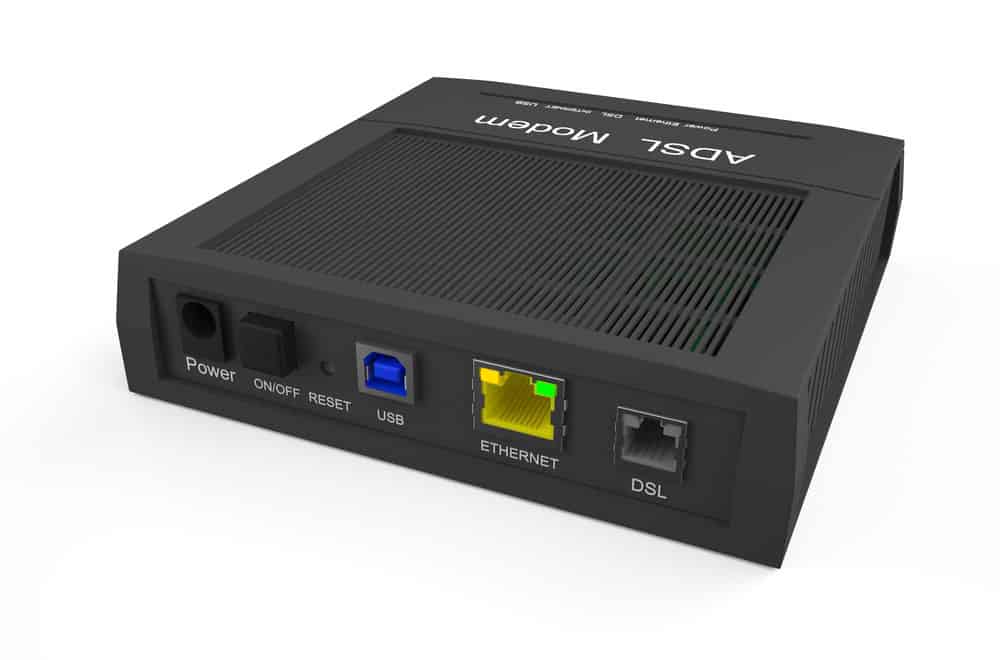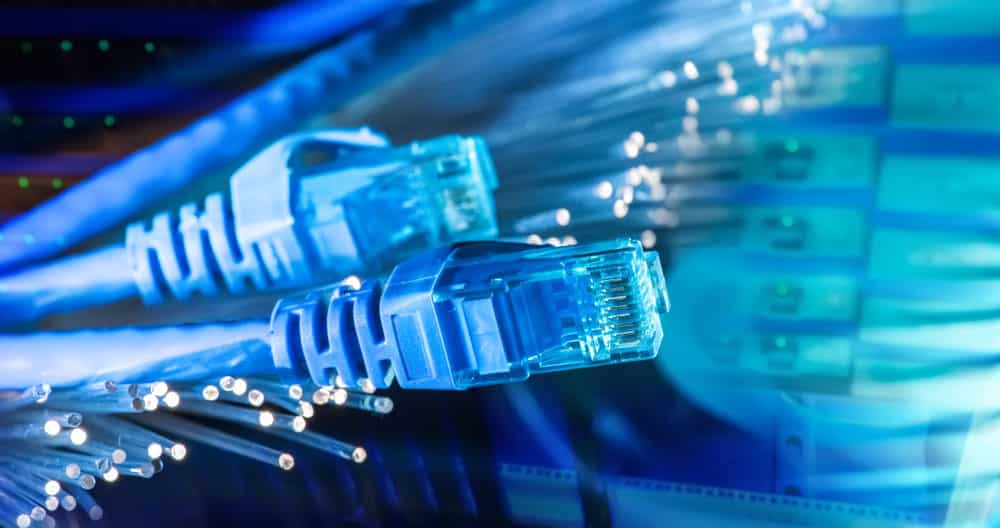One of the most conventional internet options is the Digital Subscriber Line (DSL). While today there are alternatives to DSL, this internet technology has significantly helped us in the past connect to the web.
Today, we’ll analyze the high-speed internet options that have replaced DSL. Let’s get started.
Table of Contents
- What is DSL?
- Types of DSL Internet
- Do I need DSL Internet?
- Alternatives to DSL Internet
- Key Considerations When Choosing Internet Option
What is DSL?

An Internet cable.
It is an internet service that suppliers deliver via conventional phone lines. Also ranks among the most readily accessible internet technologies. It is primarily because of the extensive network of phone lines in the US and other parts of the world.
This internet type is also the most popular among rural users because of its availability. Thus, most rural internet providers rely on DSL transmission technology more than any other internet seller.
Types of DSL Internet

A DSL Icon.
The rural internet option comes in various forms, as we’ll elaborate on in this section.
VDSL
It is the fastest form of DSL internet thanks to its high bit rate. This DSL internet mode also delivers the fastest connection of all types. Nonetheless, you can only transmit it within short distances.
Its other remarkable features include the following:
- Download Speeds- 52Mbps
- Upstream Speeds- 12 Mbps
Universal DSL
It features faster speeds than the other DSL modes that we’ll look at below. It’s also unique because it allows high-speed internet connections over long distances.
RADSL
The RA in this name represents the term ‘rate-adaptive.’ This DSL option allows you to alter the connection speeds to your liking.
SDSL
It’s the ideal business internet solution for those in small entities. Nonetheless, symmetrical DSL comes with the limitation of compromising the average internet speed if many people connect to it simultaneously.
ISDN DSL
As its name suggests, it is a merger of ISDN and DSL. Hence, it enables you to send voice and text while simultaneously allowing access to the internet.
It’s the most viable internet option for rural communities looking to access both internet and phone services.
Do I need DSL Internet?

A DSL Modem.
DSL Internet is old school though it’s not of poor quality as many think of it. It can deliver decent download speeds of about 100 Mbps.
However, do you need this internet type if you live in a location with internet options that grant a better download speed range? Let’s see its upsides and downsides to help you make a decision.
DSL Internet Upsides
- It’s the ideal rural internet option, thanks to its extensive availability.
- The internet can ably support video streaming and other activities requiring an internet connection.
- It’s the best internet option for small households.
- Lastly, it boasts cheap installation and access costs.
DSL Internet Downsides
- It often comes with relatively lower speeds than other competitive internet options.
- Also, if the rural internet provider is very far from the users, its speed will significantly wane.
Alternatives to DSL Internet
Let’s now explore the top substitutes for DSL internet.
Fiber Internet

Network cables with fiber optical background.
Thanks to its exemplary speeds, it ranks among the best internet for urban and rural users. The high-speed fiber-optic internet mainly differs from the conventional DSL internet regarding the transmission mode.
It carries the internet through light pulses rather than electrical signals. This transmission results in faster speeds than any other internet form.
Pros of Fiber Internet
- The mode guarantees exemplary speeds, while its bandwidth range is also remarkably high.
- It is the best land-based internet.
- Thirdly, it’s growing fast in popularity thanks to the extensive investment in its infrastructure.
Cons of Fiber Internet
- It may be a costly, high-speed internet option.
- The internet needs more infrastructure to facilitate supply to rural users.
Cable Internet

A Cable TV Box.
It resembles the DSL type of service in many ways. But the main similarity they share is that both rely on transmission via copper coaxial cables. Hence, you can access the cable internet service provided you’re a cable TV subscriber.
Pros of Cable Internet
- It’s a faster internet service than DSL, capable of delivering up to 1000 Mbps.
- This option is readily available as all subscribers need access to cable TV.
- Also, it’s a like-for-like replacement for fiber internet.
Cons of Cable Internet
- The internet is often widely shared amongst users, which harms its overall speed.
- It’s not truly cheap, considering there are cheaper options like DSL.
Satellite Internet

A Satellite Dish
No internet service is as readily available to all, including rural users, as satellite internet. Fundamentally this is because it doesn’t need any significant infrastructural investment, although it has some downsides.
Pros of Satellite Internet
- It is readily available in virtually all areas.
- Also, it serves broadband internet in locations where neither cable nor fiber internet is accessible.
- Thirdly, it could be a better alternative to DSL, provided there are limited obstructions.
Cons of Satellite Internet
- Its speed is generally poor, and the internet speed is worse in severe weather scenarios.
- Also, it is not purely infrastructure-free, as you need to set up a dish for a connection.
- The overall cost of setting up the satellite service is quite high.
- Lastly, the wireless internet will take a long to process bulk data volumes.
5G Internet

5G Concept.
It’s the most recent cellular internet service and arguably among the fastest options. In some cases, the internet is faster than fiber though there needs to be a more infrastructural investment to support it.
Pros of 5G Internet
- It’s a very high-speed option because it functions on high-frequency waves that other radio signals cannot interrupt.
- The service also has an extensive bandwidth capacity to support many cellphone users without significant speed losses.
- Again, it’s among the internet options with low latency and fiber.
- Lastly, it has room for improvement and refining in the future, considering it’s an upgrade of the now popular 4G.
Cons of 5G Internet
- Despite its efficiency in data processing and connection speeds, the internet is inaccessible in rural areas.
- The technology is not widely known, so there’s potential for cybercriminals to take advantage of this loophole.
- It can also be affected by barriers such as buildings and trees. Hence, it needs extensive investment in infrastructure to bypass these shortfalls.
- Lastly, it may take quite a long time for the cellphone-based internet to acquire widespread use.
Key Considerations When Choosing Internet Option

Illustrating the Internet Concept.
Check the following before settling in any of the above DSL internet alternatives.
- First, consider what you plan to use the internet to achieve. If it’s just for your phone and smart TV use, you don’t need a strong connection, so an option such as satellite internet is enough.
- Also, when considering upgrading to another internet type, it’s important to consider if you need to change your current speed.
- Lastly, do you need to supply WiFi to your visitors or customers if you’re in a business setting? It is advisable to migrate to a faster plan if this is necessary.
Summary
DSL internet remains a viable option owing to its accessibility. Nonetheless, you may opt to replace the dial-up internet with the alternatives we’ve discussed above. As you embark on this journey, we’ve covered you as we’ve exhausted all it entails.
